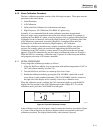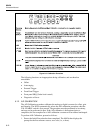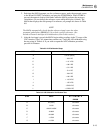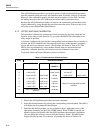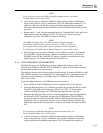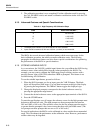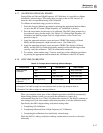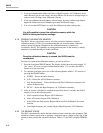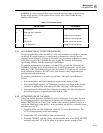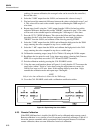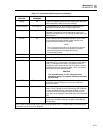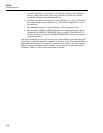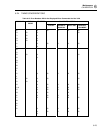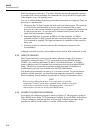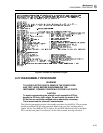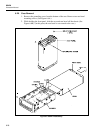
Maintenance
CALIBRATION
6
6-19
If ERROR 41 occurs, the most likely cause is that the reference input is incorrect (e.g.,
has the wrong polarity). If the input is in fact correct, refer to the Troubleshooting
heading in this section.
Table 6-13. Tolerance Limits
CALIBRATION TOLERANCE
1. A/D Calibration ±244 counts from prompt
2. Offset and Gain Calibration
VDC, mA DC ±488 counts from prompt
Ohms ±3002 counts from prompt
VAC, mA AC ±3002 counts from prompt
3. HF AC Calibration ±9999 counts from prompt
6-21. AC CALIBRATION AT OTHER FREQUENCIES
For special applications where the 8842A is to be used to measure ac voltages or currents
exclusively at a single frequency or narrow range of frequencies, accuracy may be
enhanced at that frequency (or range of frequencies) by performing calibration according
to the following procedure. Note that this may degrade the accuracy at frequencies
significantly removed from the frequency of optimization.
To optimize performance at a frequency less than 1 kHz, perform the offset and gain
calibration procedure, above, using the frequency at which measurements will be made
rather than 1 kHz. This technique may be used for both the VAC and mA AC functions.
At the calibration frequency, the 8842A will yield accuracy closely approaching the
specified mid-band performance.
To optimize performance at a frequency greater than 1 kHz, perform calibration as
follows:
1. Perform the Offset and Gain Calibration procedure using inputs at 1 kHz.
2. Perform the High-Frequency AC Calibration procedure using inputs at the desired
frequency of optimization rather than at 100 kHz. Skip step 5 in that procedure
3. Again perform the Offset and Gain Calibration procedure, this time using inputs at
the desired frequency of optimization rather than at 1 kHz.
6-22. OPTIMIZING USE OF THE 5450A
If the Fluke 5450A Resistance Calibrator is used to calibrate the 2-wire ohms function,
the following procedure is recommended to optimize the calibration of the lowest two
ranges. (The 5450A has a 25 mΩ "floor" which would otherwise result in 25 digits of
error in the 200Ω range of the 8842A.) In this procedure, the 8842A is referred to as the
unit under test (UUT).
1. Complete Offset and Gain Calibration for the UUT’s 4-wire ohms function. The
UUT will then be taking verification readings.
2. Connect the UUT to the 5450A as shown in Figure 6-4.
3. Select the "SHORT" from the 5450A, and measure this value at the 5450A OUTPUT
terminals using the UUT in 4-wire ohms. If in remote, take the average of four



